Have you ever pondered whether the perfect pan could take your cooking adventures to a whole new level? With many options available in the market, understanding each type of pan's unique features and benefits can make all the difference in your culinary journey.
In this comprehensive guide, we will discuss various types of pans and cookware materials and how to choose the best option for your cooking needs.
Types Of Pans
The world of cookware offers an incredible array of pans, each with distinct features and advantages designed to suit specific cooking tasks. Some common types of pans include:
- Skillets: used for frying and sautéing
- Sauté pans: perfect for browning, searing and frying
- Saucepans: great for boiling and simmering
- Stockpots: perfect for making soups and stocks
- Roasting pans: used for roasting meats and vegetables
Having the right pan can make your cooking experience efficient and enjoyable.
We'll delve into the variety of pans out there, each with its own unique culinary applications.
Skillets
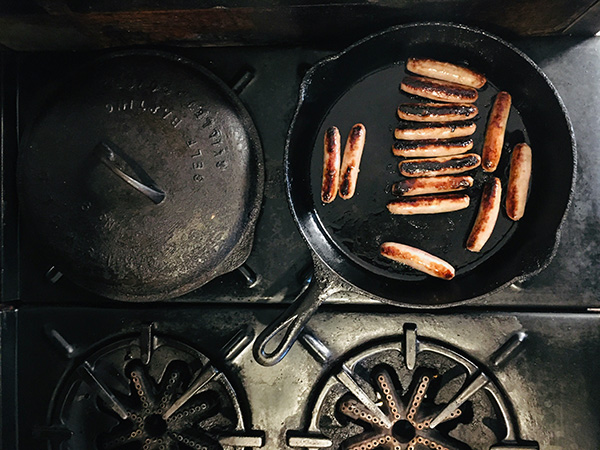
A skillet is a versatile pan with sloped sides, ideal for various cooking tasks such as frying, sautéing, and browning. Skillets are a staple in any kitchen and are available in various materials like cast iron, stainless steel, and nonstick coating. A cast iron skillet is an excellent heat conductor known for maintaining a consistent temperature without fluctuations. As they are seasoned over time, the flavors they impart to your food are simply unmatched.
On the other hand, nonstick skillets are perfect for cooking delicate items like eggs and fish fillets, as their coated surface allows for easy food release without the need for excessive oil or butter. Stainless steel skillets, while requiring some oil or butter, balance the heat retention of cast iron and the convenience of nonstick pans for lighter dishes.
The skillet material you opt for will be largely determined by your culinary preferences and favorite cooking dishes.
Casserole Dish

Casserole dishes are deep, oven-safe dishes perfect for baking and serving a variety of dishes, including casseroles, lasagnas, and baked desserts. They are available in various materials, including cast iron, enameled cast iron, and stoneware, each with distinct advantages.
Stoneware, for example, is an excellent choice for slow cooking, as it can withstand high temperatures and provides even heat distribution.
Fry Pan
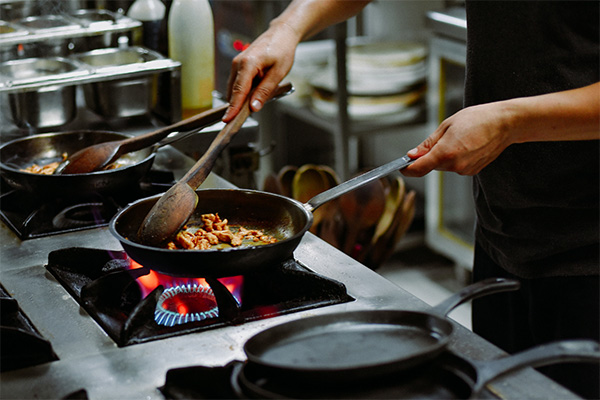
Frying pans are shallow pans with flat bottoms and curved sides, making them suitable for frying, sautéing, and stir-frying. They come in various materials, such as aluminum, carbon steel, and stainless steel, as well as different sizes to accommodate your cooking needs. One popular option among frying pans is the stainless steel frying pan, which offers durability and even heat distribution.
The Caraway Fry Pan, for instance, is a nonstick ceramic fry pan that conducts heat efficiently, providing speedy and uniform heat distribution. A quality fry pan is a vital kitchen utensil regardless of material or size.
Saute Pan
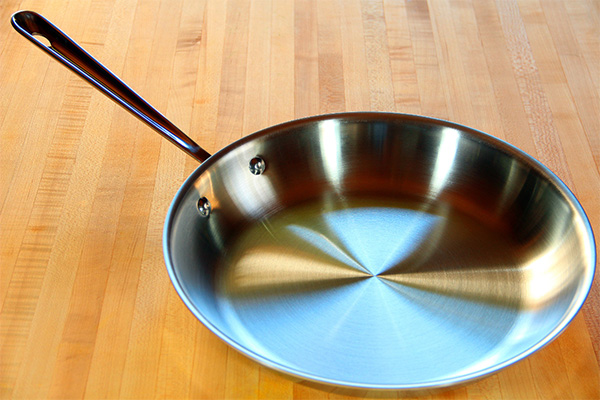
The sauté pan is another versatile piece of cookware, featuring a flat bottom and straight sides to accommodate a wide range of cooking styles, including:
- Sautéing
- Browning
- Searing
- Frying
Sauté pans are available in various materials, including stainless steel, cast iron, and nonstick coatings, each offering unique benefits.
For example, a stainless steel sauté pan provides rapid, uniform heating, while a cast iron sauté pan is known for its durability and ability to retain heat. Selecting an appropriate sauté pan for your kitchen hinges on your cooking style and favorite dishes.
Saucepan
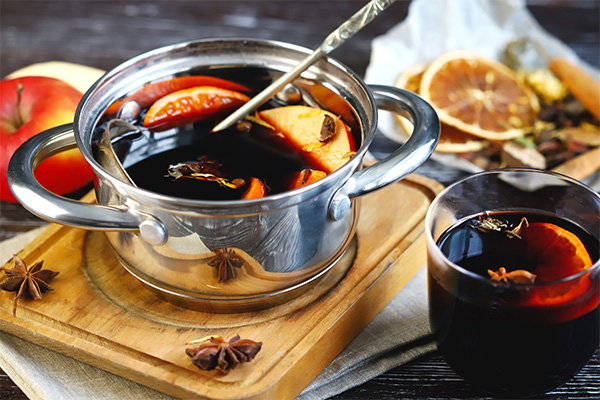
Saucepans are versatile pots with tall, straight sides and rounded bottoms, making them perfect for simmering, boiling, and reducing liquids. They are available in various materials, including stainless steel, enameled cast iron, and nonstick coatings, each offering distinct advantages. While saucepans are great for these tasks, a stock pot is ideal for larger cooking projects.
Certain saucepans in the market possess the depth and robustness required for frying chicken or preparing a substantial quantity of oven-baked rice. Including a saucepan in your cookware arsenal allows for easy handling of many culinary tasks, including pasta boiling and careful sauce preparation.
Wok
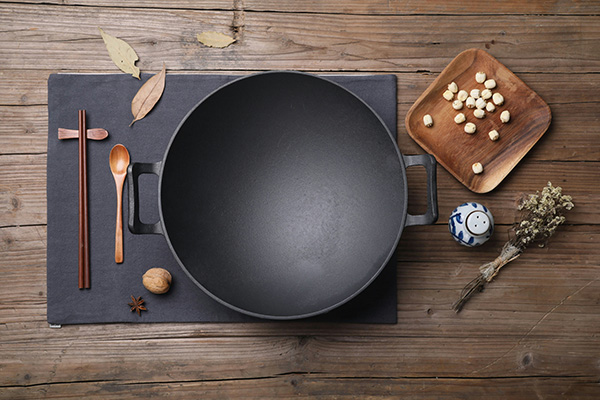
Woks are deep, bowl-shaped pans with high, sloping sides, making them ideal for stir-frying, deep-frying, and steaming. Traditionally made of carbon steel or cast iron, woks are designed to manage high temperatures, providing greater versatility in your cooking repertoire. They are ideal for creating delicious stir-fries, fried rice, and other dishes inspired by Asian cuisine.
Roasting Pan
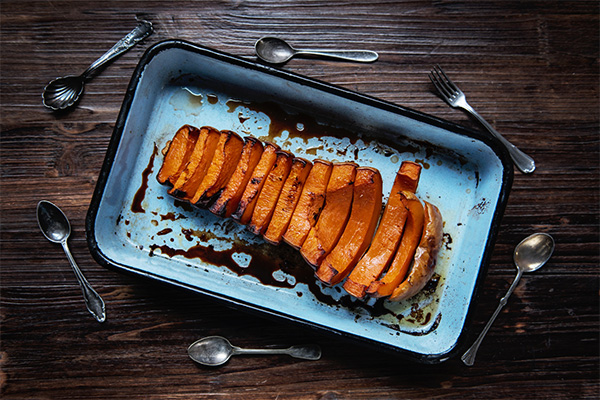
A roasting pan is usually a deep, rectangular, or oval-shaped cooking container crafted from materials like stainless steel, aluminum, or other metals. It's used for roasting meats and poultry in an oven. The pan's depth and handles make it ideal for holding large cuts of meat, collecting drippings for gravies, and achieving even cooking.
Paella Pan
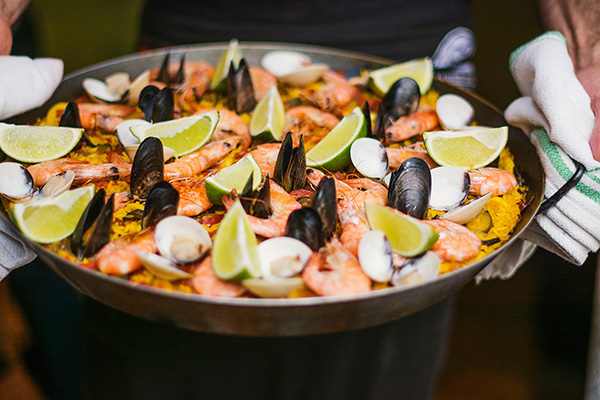
A paella pan, also known as a "paellera," is a wide, shallow, and flat cooking vessel with two handles, traditionally made of thin, polished steel. It's used for preparing paella, a famous Spanish rice dish. The broad surface allows for even cooking of rice, meats, seafood, and saffron-infused flavors, creating a delicious one-pan meal.
Grill Pan
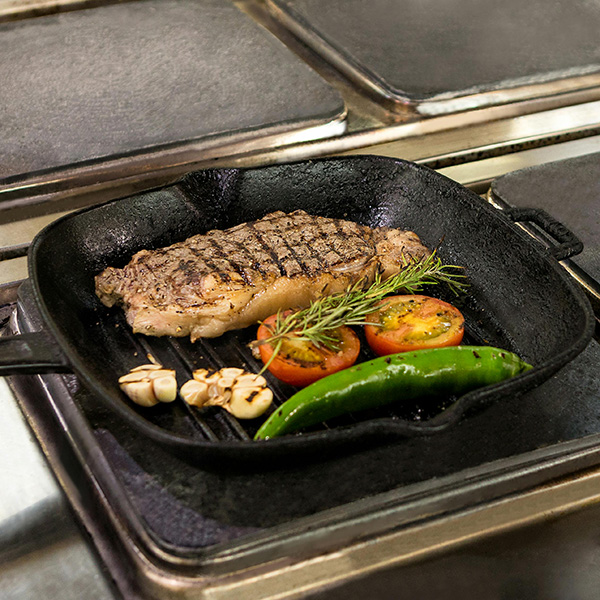
Grill pans are flat or rigid pans used for grilling meats and vegetables on the stovetop, providing grill marks, and even cooking. They are available in a variety of materials, including cast iron, aluminum, and stainless steel. Grill pans are perfect for those who want to enjoy the flavors of grilling without the need for an outdoor grill.
Broiler Pan
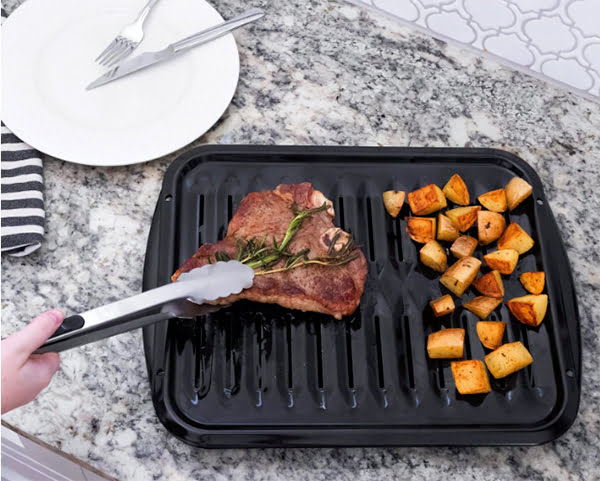
Broiler pans are specialized cookware with two components: a shallow upper grate and a deeper lower pan designed for broiling in the oven. Typically made of stainless steel or enameled steel, they allow direct exposure to high heat from the broiler element. This method caramelizes and chars food quickly, making broiler pans ideal for cooking steaks, seafood, and other dishes that benefit from a crispy, browned finish. The lower pan collects drippings, preventing smoke and flare-ups, while proper cleaning ensures longevity.
Braiser
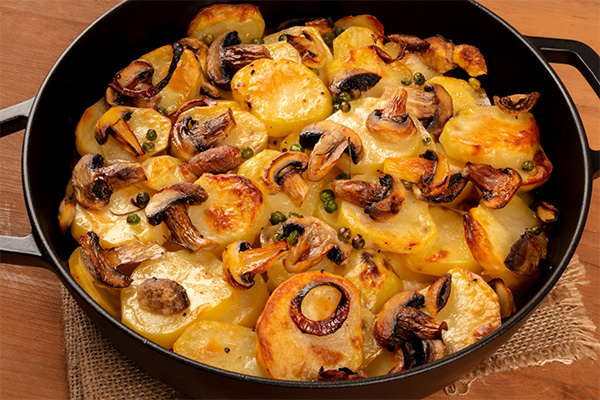
A braiser is a wide, shallow, lidded cooking vessel, typically made of cast iron or stainless steel. It's used for slow-cooking dishes that require both searing and simmering, like pot roasts and stews. The braiser's wide base allows for browning ingredients, while the tight-fitting lid traps moisture, ensuring tender, flavorful results. It is ideal for preparing flavorful dishes that necessitate prolonged cooking periods at lower temperatures.
Crêpe Pan
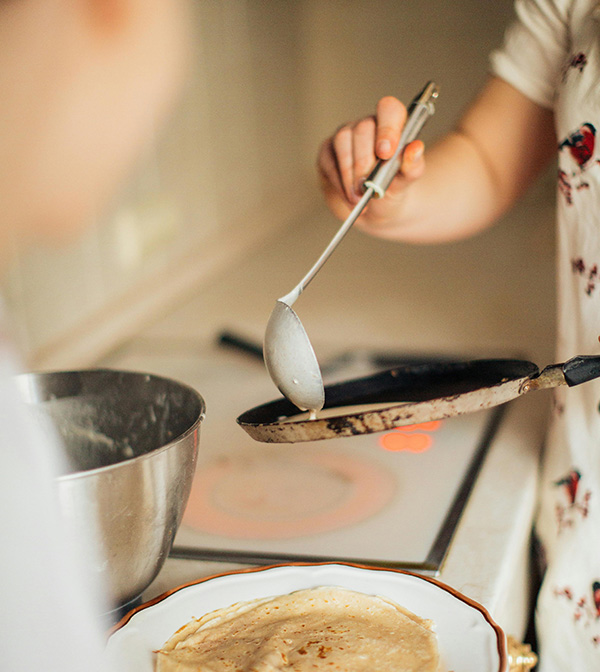
A crêpe pan is a flat, shallow skillet with low sides and a wide, flat bottom. It's specifically designed for making crêpes, thin and delicate French pancakes. The pan's low sides and even heat distribution help achieve the thin, uniform texture of crêpes and ensure they cook evenly without sticking. Crepe pans are typically made of nonstick materials or carbon steel to ensure easy release and cleanup.
Egg Pan
Whether you're a novice or an experienced chef, an egg pan is an essential tool in any kitchen. Egg pans are small, shallow pans with sloping sides designed for cooking eggs and omelets. They often feature nonstick surfaces for easy release and cleanup, perfect for preparing delicate dishes such as scrambled eggs and omelets.
Griddle
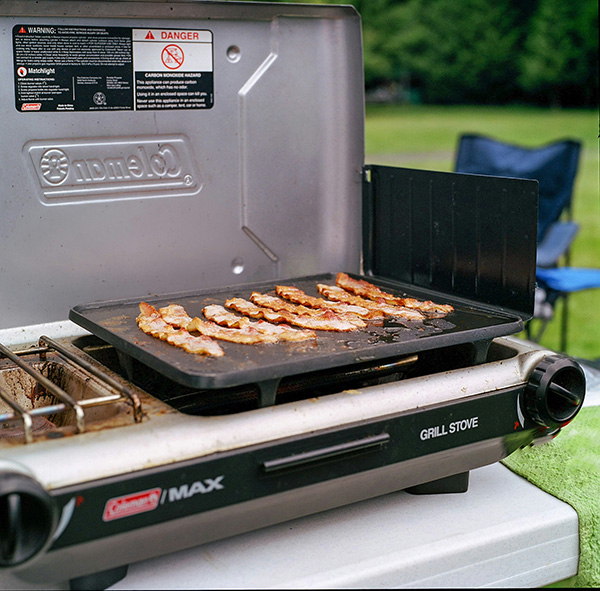
From flipping pancakes to grilling the perfect panini, a griddle is a versatile addition to your cookware collection. Griddles are flat, rectangular pans used for cooking breakfast foods, pancakes, and grilled sandwiches. Available in various materials such as cast iron, aluminum, and nonstick coatings, griddles provide a large cooking surface for efficient and even cooking.
Cookware Materials: Pros And Cons
Aluminum
Many home cooks favor aluminum cookware due to its lightweight nature, cost-effectiveness, and excellent heat conductivity. However, acidic foods with high acidity levels can react with aluminum cookware and produce a metallic taste. Common examples of acidic foods include tomatoes, citrus fruits, vinegar, and certain sauces. To address this issue, there is anodized aluminum cookware, which offers increased durability, resistance to scratches, and non-reactive properties compared to conventional aluminum cookware.
When deciding on aluminum cookware, consider whether you prefer the cost-effectiveness and lightness of regular aluminum or the non-reactivity and durability of anodized aluminum. Every choice provides distinctive benefits, making it crucial to pick the one that best suits your cooking preferences and requirements.
Carbon Steel
Carbon steel cookware is lightweight, cost-effective, and an efficient heat conductor, making it an ideal choice for woks, omelet pans, and crêpe pans. Similar to aluminum, carbon steel can cause reactions when in contact with certain acidic foods. This leads to a metallic flavor and imparts a muted gray hue to the food. Furthermore, carbon steel cookware requires periodic seasoning to uphold its nonstick qualities and safeguard against rust formation.
Carbon steel cookware remains a favored option among professional chefs despite its potential drawbacks due to its exceptional heat retention and even distribution capabilities. When pondering over carbon steel cookware, bear in mind the possible reactivity with specific foods and the necessity for consistent seasoning and upkeep.
Copper
Copper cookware is celebrated for its exquisite appearance and superb heat distribution. Copper is one of the finest heat conductors, allowing for precise temperature management. However, its safe usage depends on coating with another material like stainless steel or tin, as copper is not nontoxic. Maintaining its lustrous look necessitates regular polishing and is susceptible to dents and scratches. Like carbon steel and stainless steel pans, copper can also react with acidic foods.
Even though copper cookware is a luxurious option for many home cooks, it's worth considering the maintenance it demands and the potential safety issues if the protective layer gets damaged. If you're prepared to dedicate effort to its maintenance, copper cookware can make a splendid kitchen addition.
Ceramic
Ceramic cookware is nontoxic, non reactive, and easy to clean, making it a popular choice for health-conscious cooks. Nonetheless, it is susceptible to scratches and may not exhibit the same durability as other materials like cast iron or stainless steel.
Ceramic nonstick cookware is generally considered safe. However, some may contain silica nanoparticles and silicon dioxide, which raises health concerns. These nanoparticles can potentially leach into food, prompting health worries regarding long-term exposure.
When considering ceramic cookware, weigh the advantages of its nontoxicity and nonreactivity against its susceptibility to scratches and potentially diminished longevity. If you seek a health-conscious and easy-to-clean choice, ceramic cookware could be the perfect choice.
Cast Iron
Cast iron cookware boasts exceptional durability and versatility, capable of enduring high temperatures while resisting denting, warping, and chipping. Some benefits of cast iron cookware include:
- Ability to add extra flavor to food through the seasoning process
- Even heat distribution for consistent cooking and cooks food evenly
- Retention of heat for longer periods
- Versatility for use on stovetops, ovens, and even campfires
These qualities make cast iron skillet and Dutch oven especially popular among home cooks and professional chefs alike.
Nevertheless, cast iron pans require consistent seasoning with oil and upkeep to ward off rust and maintain their nonstick surface. In addition, cast iron skillets can react with acidic ingredients, potentially affecting the taste and color of dishes.
Despite the myriad benefits of cast iron cookware, one must consider the extra maintenance necessary to preserve its performance and aesthetics. If you're willing to invest the time and effort in proper care, cast iron cookware can be a long-lasting and flavorful addition to your kitchen.
Enameled
Enameled cookware offers the benefits of cast iron, such as heat retention and versatility, without the need for regular seasoning. It is non-reactive and easy to clean, making it a popular choice for grill pans, skillets, Dutch ovens, and other slow-cooking pots. Many consider enameled cookware non-toxic, but some may worry about enamel coating made of clay, which can leach lead and cadmium.
However, enameled cookware can be prone to scratching if not handled carefully, and the enamel coating may chip over time. When choosing enameled cookware, it's important to consider the benefits of its non-reactive properties and ease of cleaning, as well as the potential for scratching and chipping. With proper care and handling, enameled cookware can be a durable and low-maintenance option for your kitchen.
Nonstick
Nonstick cookware is known for its ease of use and easy cleanup, making it an excellent choice for cooking healthy, low-fat foods. However, a nonstick pan does not exhibit the same level of durability as other materials like cast iron or stainless steel, and its nonstick coating may deteriorate with use over time. Additionally, nonstick cookware usually cannot endure high temperatures and may emit potentially harmful fumes if overheated.
Many nonstick cookware containing Teflon, a PTFE-based coating, offers convenient cooking and easy cleanup. It reduces the need for excess oil, promoting healthier cooking. Nonetheless, it's essential to exercise caution to prevent overheating, scratching, and gradual wear and tear over time.
At extremely high temperatures (over 500°F or 260°C), Teflon can emit fumes containing perfluorooctanoic acid (PFOA), which can be toxic when inhaled. In addition, the coating breakdown can leach into your food and is linked to many health issues like thyroid disease, kidney and testicular cancer, ulcerative colitis, pregnancy-induced hypertension, and more.
When shopping for nontoxic, nonstick pans, look for PFOA- and PTFE-free products, indicating the absence of potentially harmful chemicals. Choose pans with ceramic coatings, as they tend to be safer. Read product descriptions, customer reviews, and safety certifications to ensure the cookware meets health and safety standards.
Stoneware
Stoneware cookware is highly durable, able to withstand high temperatures, and is generally free from lead and toxins. It is usually crafted from stone or ceramic, making it a superb option for slow cooking and baking.
Nonetheless, stoneware is prone to cracking and chipping if not handled with care. In evaluating stoneware cookware, it's crucial to balance the advantages of its durability and high-temperature resistance against the risk of cracking and chipping. With proper care, stoneware cookware can be a long-lasting and safe option for your kitchen.
Stainless Steel
Stainless steel cookware is highly durable, easy to maintain, and does not react with foods, making it a popular choice for many home cooks. It offers the following benefits:
- Rapid, uniform heating
- Compatibility with induction cooktops (often magnetic)
- Durability and dependability for use in a dishwasher, oven, or broiler (depending on the handle material)
- Friendly material with metal utensils
However, it may be more challenging to clean than nonstick cookware, and food may stick to the surface if not properly oiled or preheated. To prevent food from sticking, preheat the pan, use enough oil or fat, and allow food to develop a sear before flipping. Deglaze the pan to release stuck bits.
In selecting stainless steel cookware, consider the advantages of its durability, non-reactivity, and uniform heating while also considering the potential difficulties of cleaning and food adherence. Stainless steel cookware, like a stainless steel pan, is a versatile and enduring choice for any kitchen.

